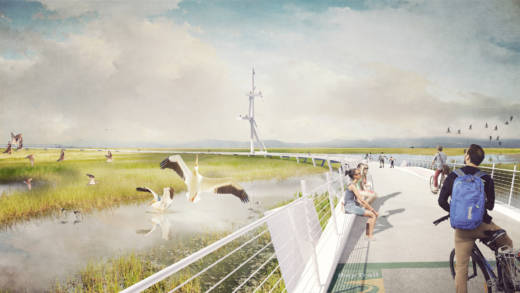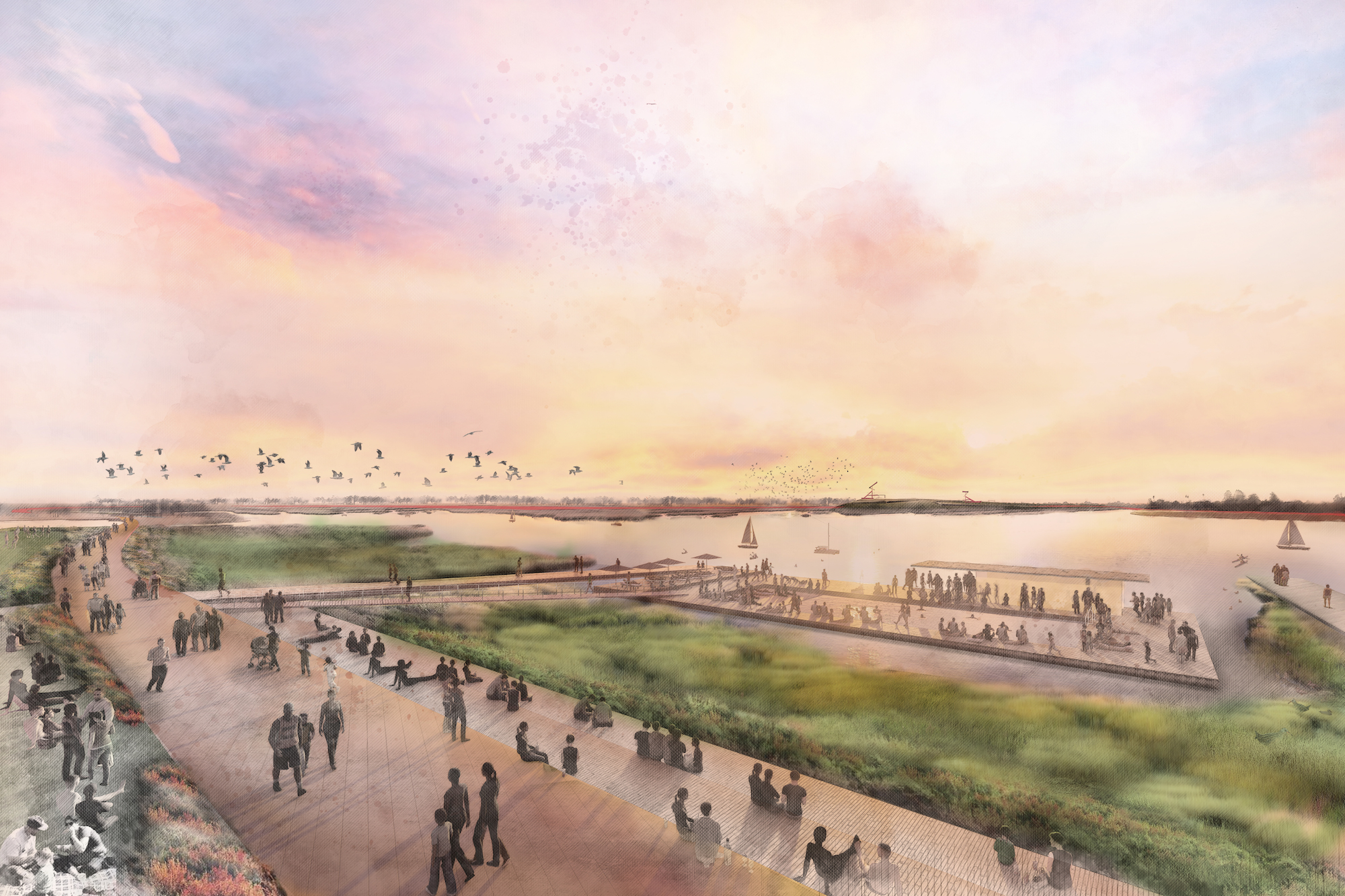Design teams from around the world unveil their visions today for a ring of ambitious projects circling San Francisco Bay, all aimed at increasing “resilience” to the challenges of rising sea levels and other growing threats to communities.
After a year’s worth of ground work, nine teams participating in the Resilient by Design Bay Area Challenge take the wraps off of their various visions. Some are long on lofty language and short on concrete plans, but all are the product of some of the world’s most forward-thinking urban designers, funded mainly by the Rockefeller Foundation.
“We’ve really been able to raise awareness around flood risk and come up with big ideas,” says Amanda Brown-Stevens, the project’s director. “And we believe that some of these ideas will be ready to take next steps — that we can move toward implementation.”
Though none of the concepts will come cheap, some have fairly specific aims. The team known as Common Ground has a plan for relieving a major bottleneck at the north end of the bay. Designers envision raising State Highway 37 twenty feet off the ground to create a “Grand Bayway” that would both speed traffic between Sears Point and Vallejo and allow tidal flows to restore the marshlands underneath. Team members propose taking another year to establish “agreed goals and criteria” for their “far-ranging and ambitious” plan, while at the same time starting a series of smaller “bottom up” projects that would ultimately weave into the overall project.
Highway 37, much of which is one lane in each direction, has become a major headache for North Bay commuters even when it’s not closed by traffic mishaps or flooding, as it was several times in the wet winter of 2016-17.
Meanwhile the All Bay Collective team says it is “rethinking the shoreline” around San Leandro with “a network of flourishing greenways” that would provide recreation and ecological benefits, as well as a buffer against rising bay waters. The plan counts on pulling together eight different communities from East Oakland to San Leandro to create and manage the resulting “Estuary Commons,” which would include floating housing. Some of it is pretty “out there” compared to conventional notions of urban development. But designers say that’s what’s called for with projections for sea level rise ratcheting up, seemingly with each new study.


